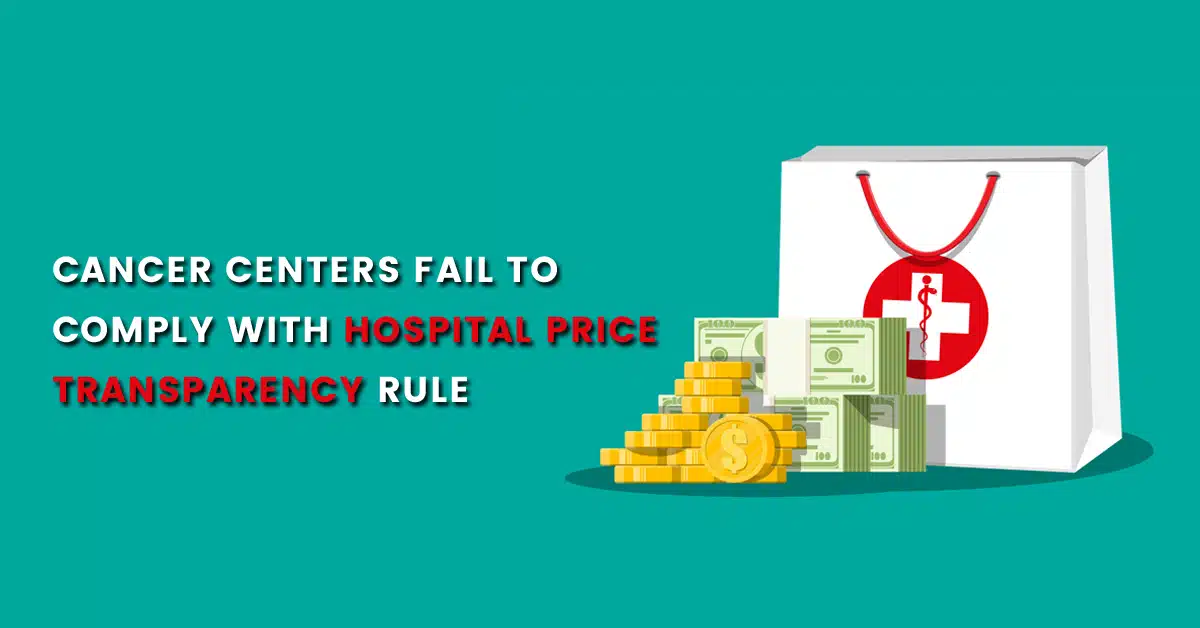Failing to post files in a machine-readable format was the most common violation of the hospital price transparency rule among NCI-designated cancer centers.
Less than one-third of hospitals with National Cancer Institute (NCI) cancer center designation were fully compliant with the CMS hospital price transparency rule, according to research published in JAMA Surgery.
The price transparency rule went into effect on January 1, 2021, and requires hospitals to publish a machine-readable file containing gross and payer-negotiated charges for services provided.
Researchers looked at the websites of 63 hospitals with NCI-designated cancer center status in August 2021 to determine which facilities posted a list of negotiated prices.
They also checked for compliance with five federal requirements. They noted whether the file was uploaded in a machine-readable format, freely accessible without registering or providing personal information, named appropriately, and contained a list of all items and services the hospital offers.
In addition, researchers looked at whether the file included a gross charge, payer-specific negotiated charge, deidentified minimum negotiated charge, deidentified maximum negotiated charge, and discounted cash price for each item or service.
Forty-two of the 63 hospitals provided some information on negotiated rates, but only 20 hospitals fully complied with all aspects of the price transparency rule.
Compliance with posting the file in a machine-readable format was the lowest among the hospitals, with 12 facilities failing to follow this standard. Ten hospitals did not provide all five price requirements.
The study also noted how most hospital websites and files were difficult to navigate. For example, many files were several gigabytes large and required advanced coding and experience to open or comprehend. In addition, researchers said most files had tens of thousands of rows of information and no organization regarding services listed or insurers.
Comprehensive cancer center-designated hospitals had higher compliance than hospitals with clinical cancer center designation, researchers found (74 percent versus 33 percent). Additionally, hospitals in the West were more likely to comply with regulations compared to those in the South (86 percent versus 57 percent).
The study also looked at minimum and maximum payer rates for three diagnosis-related groups (DRGs): stomach/esophagus cancer, colon cancer, and pancreas cancer. Only 15 to 18 hospitals included payer-specific prices for operations related to these cancers.
Researchers found significant variation in minimum and maximum payments for different payers within and across the hospitals for the three DRGs.
Among the hospitals that complied with the price transparency rule and provided adequate pricing information, there was variation in payments. This suggests that the regulation’s goal of increasing competition to drive down prices may have been successful at hospitals with NCI-designated cancer center status.
Hospital compliance with the price transparency rule has been low since the regulation went into effect.
A recent report from PatientRightsAdvocate.org found that just 16 percent of 2,000 hospitals were complying with the regulation.
In the 2022 Medicare Outpatient Prospective Payment System (OPPS) rule, CMS determined that noncompliant hospitals with less than 30 beds would receive penalties of $300 per day, while hospitals with 31 or more beds would receive a $10 per bed per day penalty, with a maximum daily fine of $5,500.
The agency sent the first penalty notices to two Georgia hospitals in June 2022 after the facilities failed to comply with the machine-readable file and shoppable services requirements.
For More Information: https://revcycleintelligence.com/news/cancer-centers-fail-to-comply-with-hospital-price-transparency-rule


